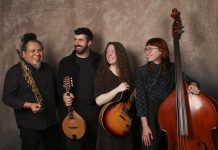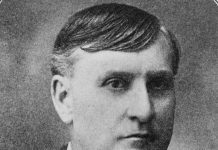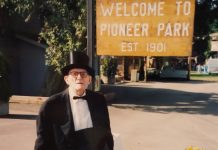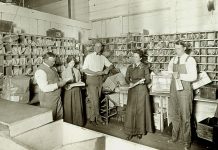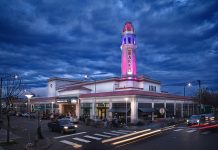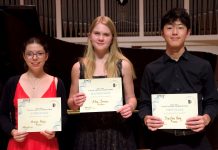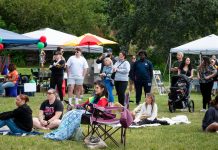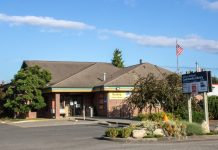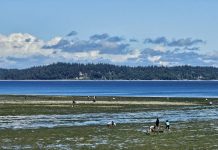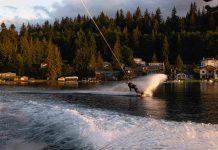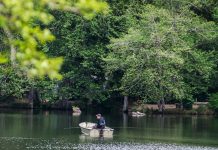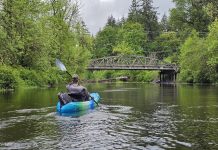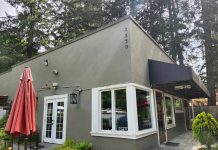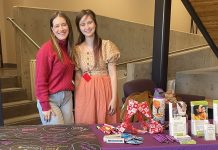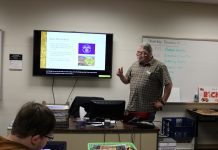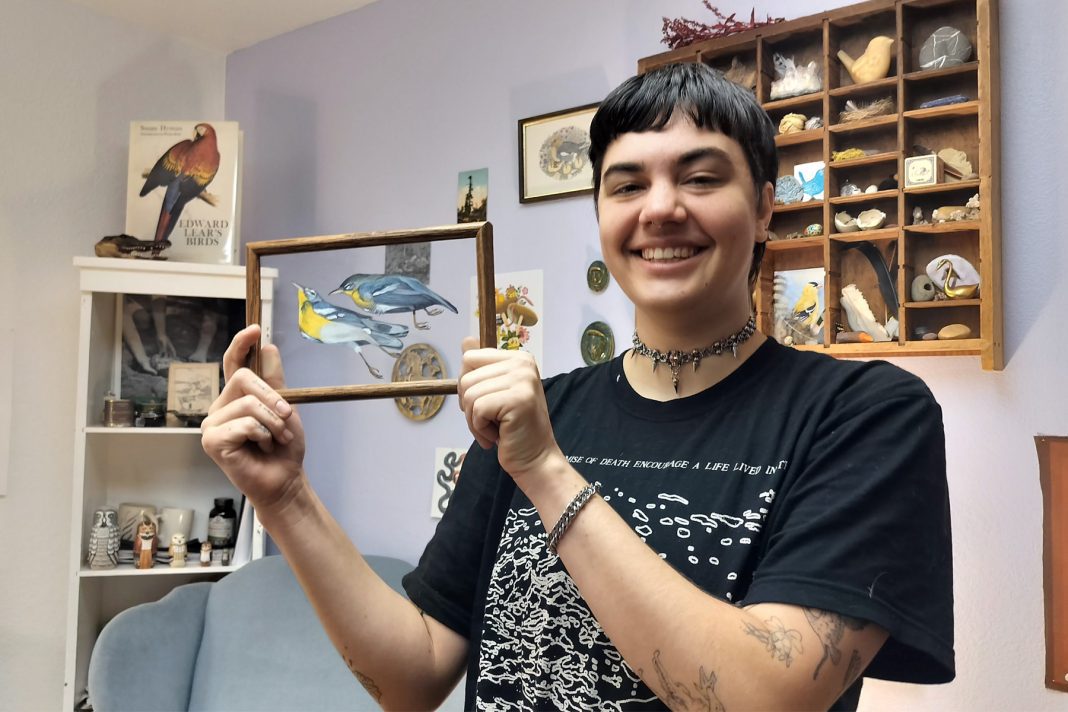Rachel Rothberg has found a way to successfully tie together a variety of different passions. In addition to being an avid birdwatcher, Rothberg has discovered a love and a talent for creating art, which they express through both oil painting and tattoo.
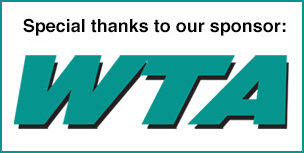
Born and raised in Palo Alto, in California’s South Bay, Rothberg discovered birdwatching as a young child, which might seem at odds with living in the heart of Silicon Valley. But Rothberg points out that it took longer to drive to San Francisco than it did to get to the ocean.
“In that region of the South Bay, you can drive just a bit and get to the ocean, to a desert, to wetlands, to a redwood forest,” they say. “I’m really lucky; even though it was relatively urban, there was a lot of effort to make nature integrated with the city.”
Rothberg became involved with the Santa Clara Valley Audubon Society and found themselves drawn to both community research and community outreach. But there are other times, alone in nature, when they run into someone else carrying a bird spotting scope and recognize this stranger is also part of their larger community.
Becoming a member of this group also spoke to something deeper in Rothberg’s personality. “I’m not a fan of top-down hierarchy. I feel like we all learn from each other, and there are so many power dynamics in the world that I want to dispel,” they say. “I’d work with people who were like a mentor or a leadership figure to me, but then I would be a mentor or leadership figure to somebody else. I really like that dichotomy, that you can always be learning or sharing what you know.”

That belief helps explain how a young city kid made themselves a home within a community that isn’t known for that demographic.
“I think that there’s a vision of bird watching as something for retired white men, because historically it has been reserved for that subset of people,” Rothberg says. “But birds are everywhere and people are everywhere, and people have been interested in what’s around them forever.” Their involvement continues today through their work with the North Cascades Audubon Society.
A Love of the Arts
Like many other artists, Rothberg began to draw at a very young age and carried that interest into school. The fact that their parents are both computer scientists makes for an interesting juxtaposition, but perhaps they all communicate similarly, just in different media. “I struggle with words sometimes, and I feel like I’ve developed this language and the skill to communicate visually,” says Rothberg. “I felt like I had a lot of things to say through that language, so I just kept painting.”
Rothberg originally set their educational sights on a double major in ecology and studio art, but arts edged out sciences, and they graduated with a degree in painting and a minor in biology. In the process of bringing science and expression together, Rothberg learned that roughly 70% of the songbird population have disappeared over the last 50 years — and that the two leading causes are outdoor cats and collisions with windows.

“They are the canary in the coal mine, an indicator of entire ecosystem collapses. It’s horrifying, and it triggers my anxiety about death, like the world is grieving and everything is awful, and I don’t know where to start,” they say. “The only way I know how to think about it is to return to the individual, to have empathy for one creature. If people look at it this way, I’m hoping they will care about the one individual, which in turn will hopefully make them care about things on a broader scale.”
Along those lines, Rothberg has produced some striking statements about the human effect on bird populations. On one hand, there are paintings that literally superimpose math and science onto scenes of nature to illustrate the consequences of human actions. On the other, they also create large- and small-scale depictions of deceased birds that do not focus on gore and trauma, but elevate them with reverent displays of rest and dignified repose.
“I don’t know how to feel about my own death or the death of people around me, but what I do know is when I see death happen in nature, more life comes from it. That is always true,” says Rothberg. “When I see a dead pine siskin, killed by a feral cat, it brings me grief, and then it brings me some amount of solace to be able to give this tiny songbird the same peace and the same weight that we would give to a human life.”
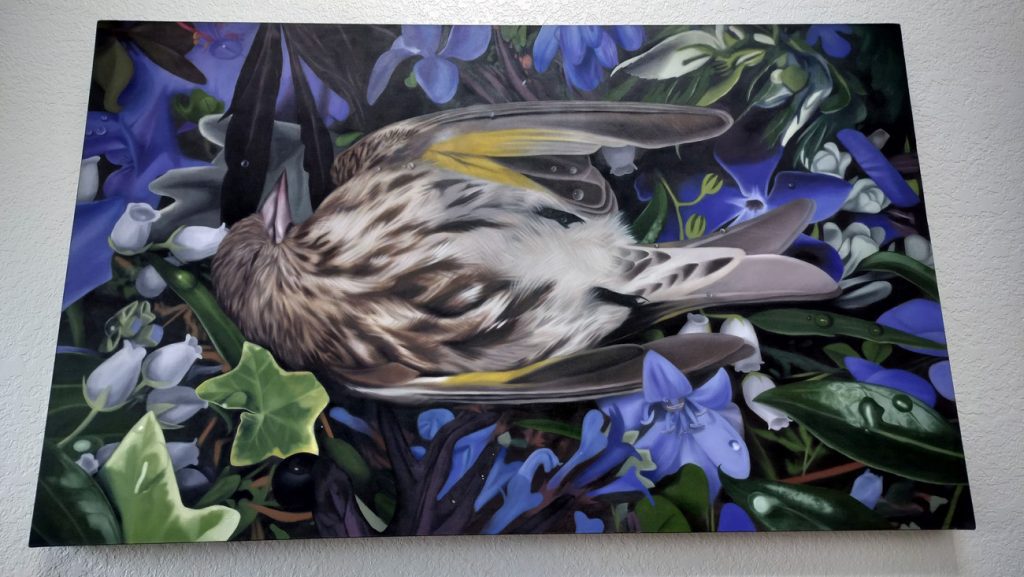
A Life in the Community
“I initially came to Bellingham because I was really interested in all of the different ecospheres here. But I applied to schools in different states,” Rothberg says. “I ended up picking Western because I remember seeing that the runway is in the middle of a forest, then I stepped off the plane onto the tarmac and it just smelled like fresh air. And I was like, ‘How can it smell so good?’”
During their freshman year, Rothberg’s roommate asked if they had ever tattooed anyone. The answer was “no,” but that didn’t stop them from giving a “stick and poke” tattoo, made without an electric tattoo machine. A seed was planted in Rothberg’s mind. They gathered equipment and started tattooing people in their COVID bubble during the pandemic, and in June of 2022 got a license and moved into a studio space.
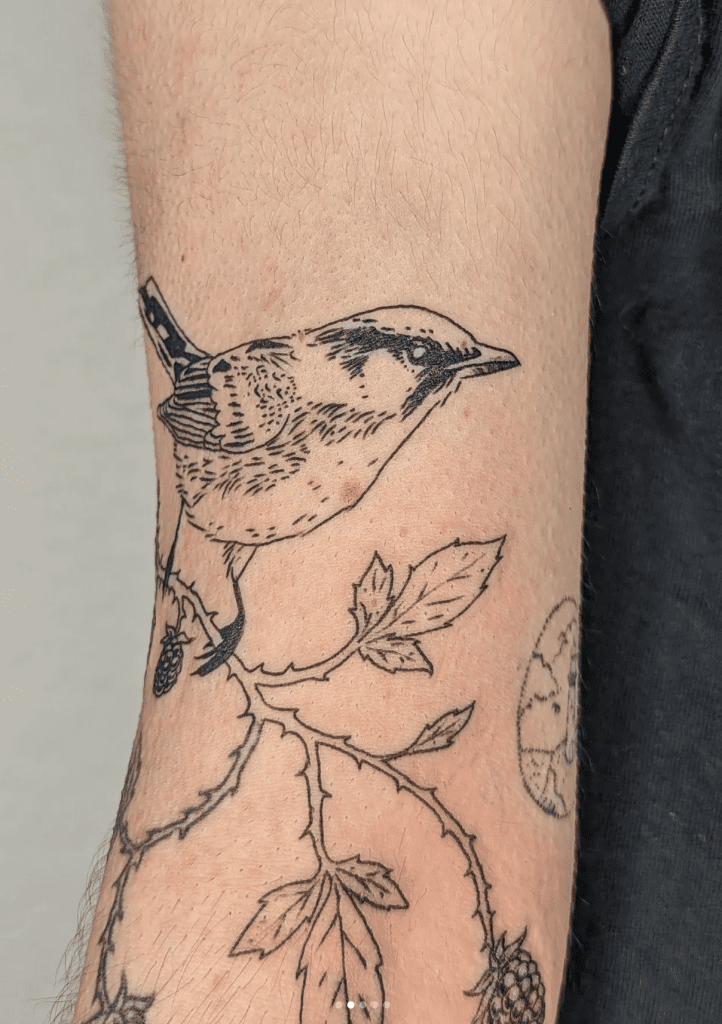
“I’m tattooing primarily because of the community, and because it’s a financially sustainable creative job right after graduating that allows me to have the schedule flexibility to do things like artist residencies,” they say. “I also like to be able to pick my own projects and decide who I work with. There’s this huge new wave of self-taught, mostly queer tattooers that’s taking the Pacific Northwest and the nation by storm, and it’s really awesome to see my peers taking this trauma-informed, consent-forward approach.”
With a little help from a social networks, it appears that Rothberg is on the right track, as they learned when they took a trip to New York as a guest artist in a tattoo parlor.
“People were like, ‘You’re from Washington, you do tattoos, and your name is Rachel… are you Rachel Poke?’ They already know who I am because of the internet, so when I was tattooing in New York City, somebody flew in from Louisiana to see me,” they say with a little wonder in their voice.
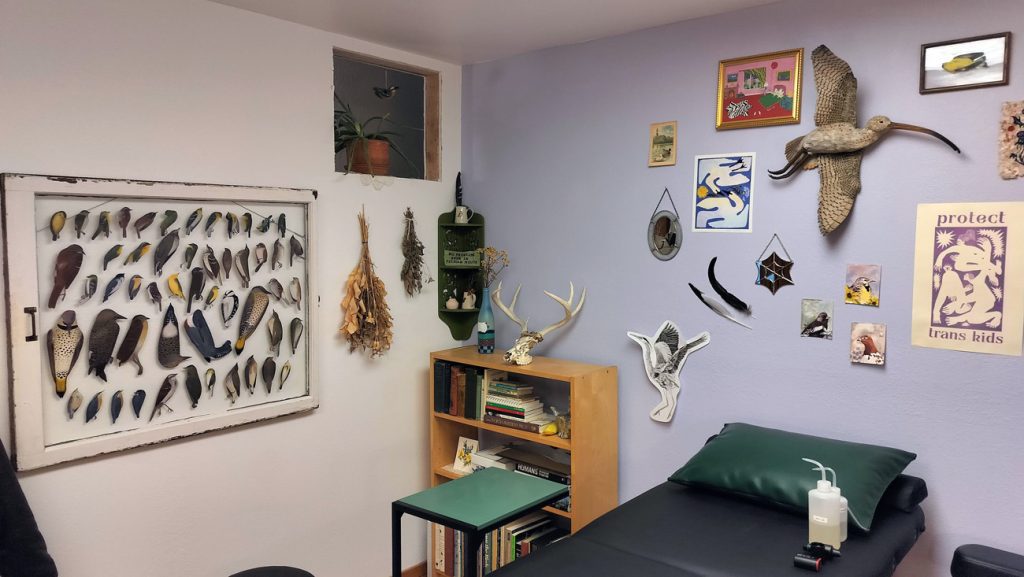
An Optimistic View
With such a solid grasp of the technical side of painting, it would be easy for Rothberg to separate themself from those of us that don’t share that talent, but they won’t let us off the hook that easily.
“There’s technical skill, and then there’s the ability to look at something and be able to communicate it with others,” Rothberg says. They think that much of the time our society only praises the technical skill, but believes there are many different factors, and different artist work differently.
“I really think that anybody could do what I do,” they say. “I really believe that every person has creativity, but maybe it gets squashed. I’m really just an optimist, and if you have something to say, you just keep saying it.”
View more of Rothberg’s paintings on their website and their tattoo artistry at Instagram.




